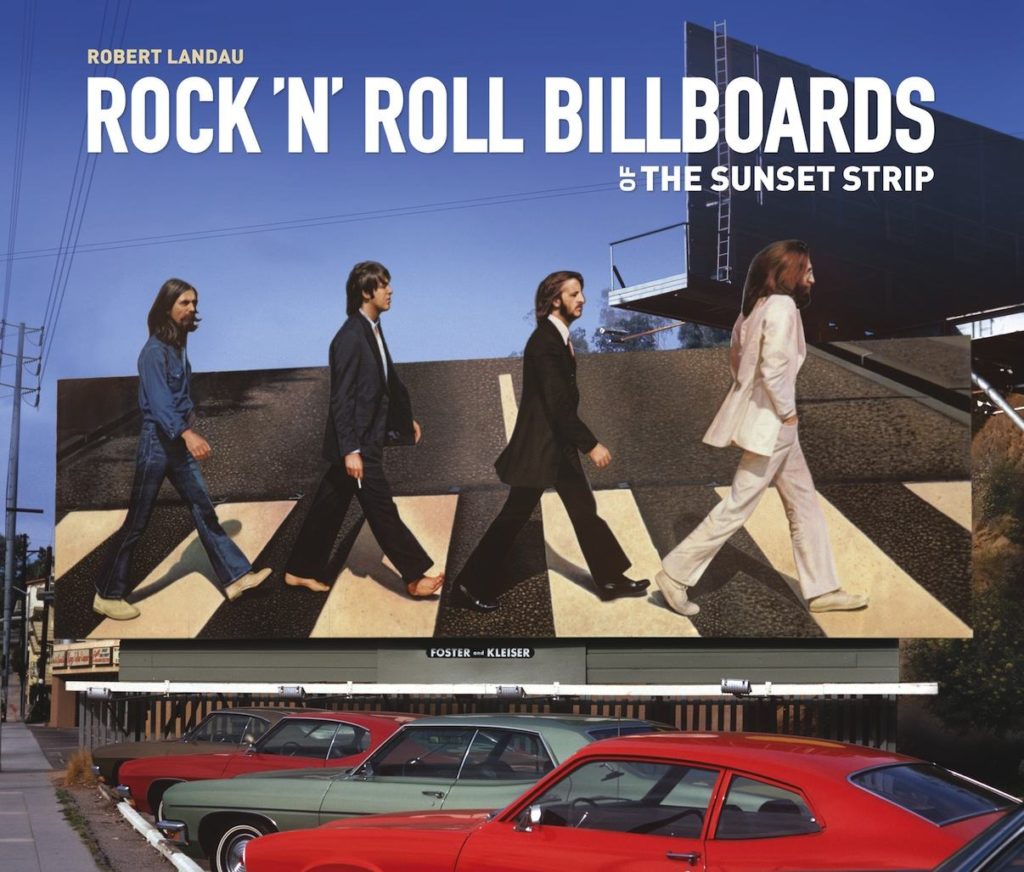Travel News
Discover the Rock ‘n’ Roll Billboards of the Sunset Strip
 You might not look twice at the billboards you pass in the highway, but in a driving city like Los Angeles, those billboards are part of history. (Google “Angelyne” to see what we mean.) But what do L.A.’s billboards have to do with the history of rock ‘n’ roll? Turns out, quite a lot.
You might not look twice at the billboards you pass in the highway, but in a driving city like Los Angeles, those billboards are part of history. (Google “Angelyne” to see what we mean.) But what do L.A.’s billboards have to do with the history of rock ‘n’ roll? Turns out, quite a lot.
Photojournalist Robert Landau grew up in an apartment above the old Tower Records, and in those years, he photographed the ever-changing scenery of the Sunset Strip. His latest book, Rock ‘n’ Roll Billboards of the Sunset Strip, just released this month from Angel City Press, takes you back to the vintage billboards of Los Angeles and the little-known story of rock and roll art.
Peter Greenberg: How long have you been keeping these posters, these billboards under wraps?
Robert Landau: I’ve been a professional photographer for many years and I owe a great deal to you–I became a travel photographer thanks to you, Peter. About 2 years ago, I went back through my records and I found these old photochromes of pictures I took when I was 16. I was living right near the Sunset Strip and my backyard was the Strip, so I started photographing these amazing rock and roll billboards that lined the Sunset in those days.
PG: We’re talking things like The Beatles and Abbey Road, and everything, right?
 RL: Yes, all the classics. Beatles, Bowie, Rolling Stones, Led Zeppelin, all had these hand-painted billboards on the Strip. This was pre-digital so guys were up there painting billboards and then 30 days later they’d paint over them and put a new message up. They were very ephemeral.
RL: Yes, all the classics. Beatles, Bowie, Rolling Stones, Led Zeppelin, all had these hand-painted billboards on the Strip. This was pre-digital so guys were up there painting billboards and then 30 days later they’d paint over them and put a new message up. They were very ephemeral.
PG: The thing is if you didn’t capture them on film they were gone.
RL: About 14 years of rock and roll history that would have disappeared except for the fact that I had been there with a camera and a burgeoning interest in photography.
PG: During that time, I was the West Coast correspondent for Newsweek, I would always drive down Sunset Boulevard, because that’s how I’d go home every night. It was an ever-changing landscape of who they thought was the next big star. It wasn’t just the iconic stars that you mentioned, there were a lot of these up-and-coming stars that they thought were going to be big hits, and boy did they leave the billboard very quickly when they didn’t sell, right?
RL: That’s true, there were some one-hit wonders. The small-time record producers, like Lou Adler, had these boutique operations. They were the guys who were really paying for these billboards, because they believed in it. Whoever they thought was hot, you’d see them on a billboard. It’s the West Coast equivalent of getting your picture on the cover of Rolling Stone. It developed its own cache, so if you had a billboard on the Strip it meant that the record people believed in you.
PG: It’s true. I remember going down the Strip and saw the very first one, which was of Cheech and Chong.
RL: Absolutely, that was from Lou Adler who was a big proponent of the billboards. One of the great joys in doing this book was that I got to go back and talk to the people who were responsible for this art, so that means Lou Adler, Jac Holzman of Elektra Records, and then a bunch of the great art directors and photographers, like Norman Seeff.
PG: The record labels had their art directors, who created the record cover art on the old LPs and who also put it up on the billboards. It’s almost a dying art.
RL: You make a very good point. The record companies already had this amazing art that they commissioned for these record covers. At a certain point record covers became gate-fold designs, so they folded out to this long horizontal shape that almost looked like a billboard, so the art translated very easily to the billboard dimension.
PG: Looking at your book, Rock ‘n’ Roll Billboards of the Sunset Strip, brings back such great memories. When you saw a billboard on the Strip you knew something was happening and somebody was in town.
For more information, visit RobertLandau.com.
Keep reading with the Travel & Music and Pop Culture Travel archives.
By Peter Greenberg for PeterGreenberg.com












